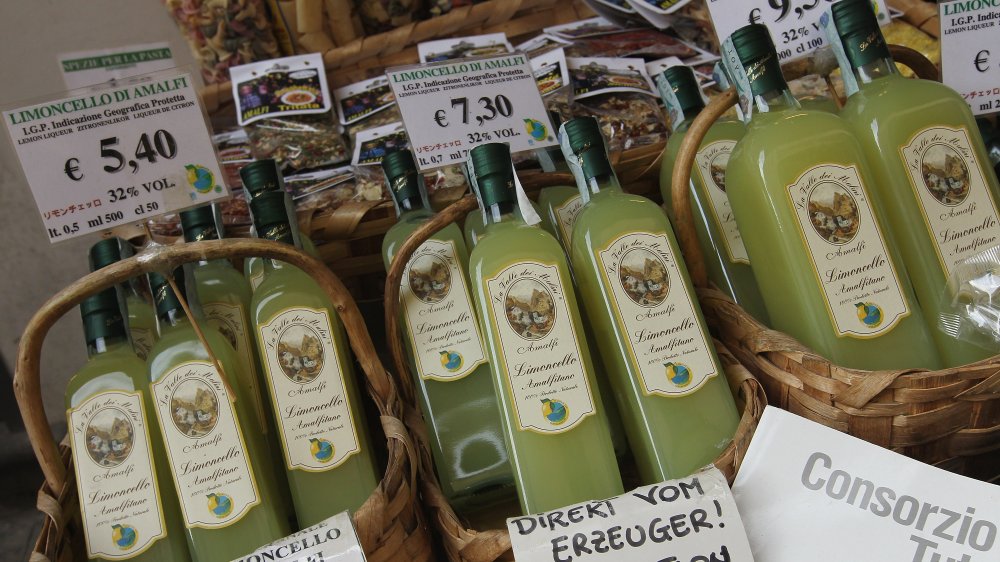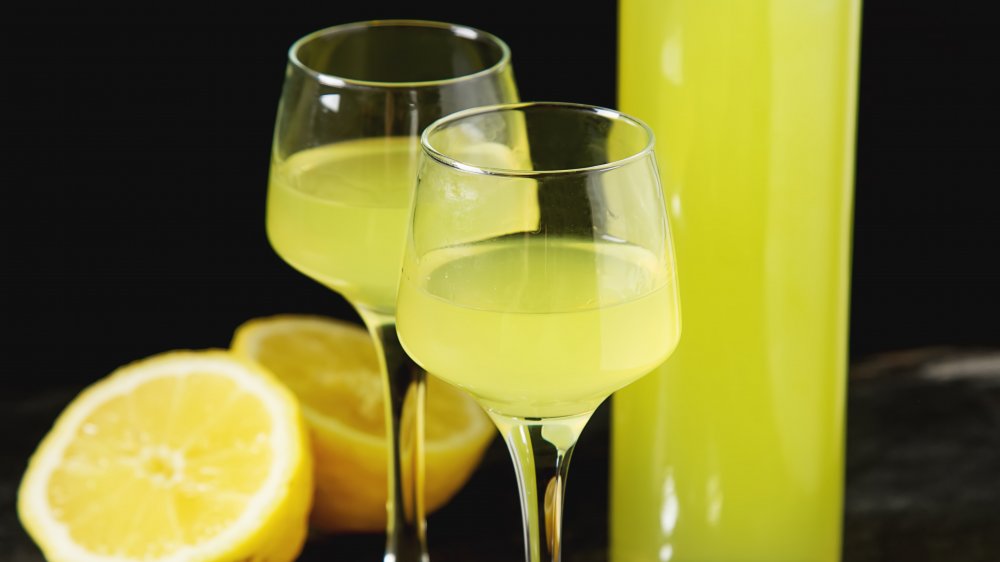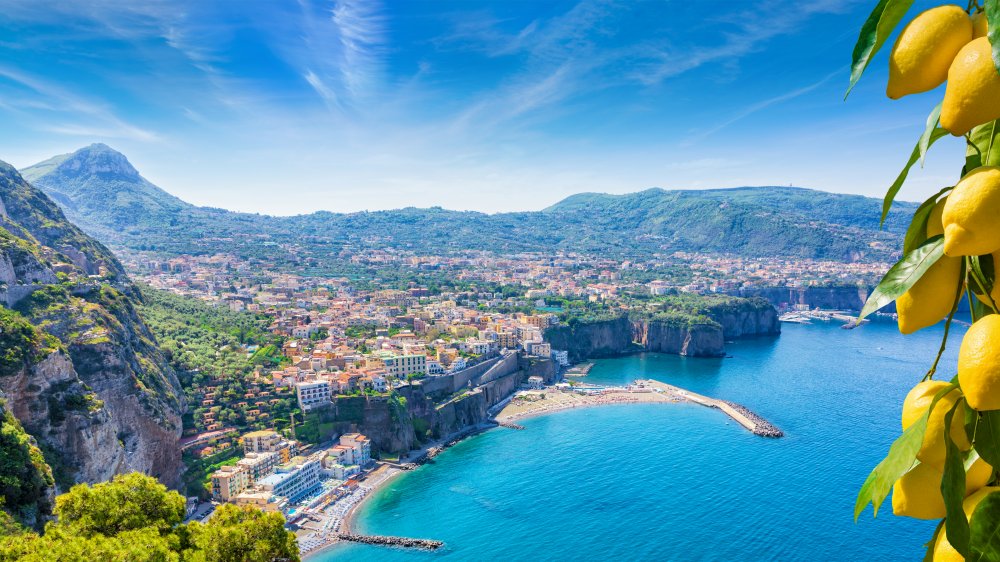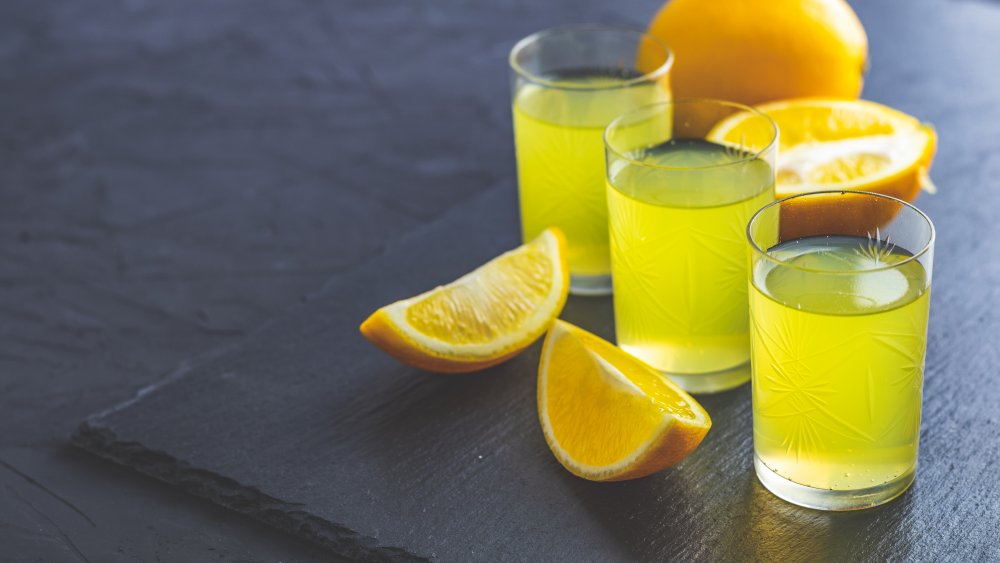The Untold Truth Of Limoncello
Limoncello traces its roots to Italy, but no one is exactly 100 percent sure where in the boot-shaped country the syrupy sweet and citrusy beverage comes from.
To hear the Italian Association of Wine/Liqueur Producers tell it though, the beverage can be traced back to the island of Capri, just off of the coast of Naples (via My Recipes). A woman there by the name of Maria Antonia Farace was famous for her citrus orchard, and after the second world war, her grandson decided to open an establishment that would specialize in the liquor that his grandmother made from her famous lemons. The grandson's son, in turn, decided to get limoncello trademarked, and he went on to market the drink internationally.
Though the official source that represents the makers of Italian liquor seems like a fairly legitimate source, others have traced the origins to Sorrento and Amalfi and grants credit to everyone from monks to fishermen.
Variations of the Italian digestif
Limoncello is consumed typically after dinner as a digestif and is served in chilled glasses (via Rick Steves). It's often provided to diners from the restaurateur on the house as a thank-you for their visit. You'll find it in skinny long-necked bottles, sometimes with ice still clinging to the glass as it's common to keep it in the freezer. Typically, the alcohol content hovers around 30 percent (via Sauced and Found).
It's a fairly simple creation which only includes lemon zest, pure alcohol, water, and sugar in the ingredient list (via Florence Inferno). This is somewhat surprising given how bright the color of the finished liquor is. Some might be taken aback to find out that the coloring of the beverage is entirely natural.
Even though limoncello is as natural as it gets, it's quite intense as well. If you find it to be a bit too much, it can also be mixed with tonic water, Prosecco, or champagne.
There's also an alternative that's in the same family — Cream of Limoncello. This cream-based liquor is sweet and thick, somewhat akin to Bailey's Irish Cream — that is, if Bailey's tasted like lemons. Infused versions of limoncello are also available and include variations flavored with strawberry, cantaloupe, and pistachio (fragoncello, melloncello, and pistachiocello, respectively).
Special Italian lemons
It makes sense that Italy would be the country to produce a beverage since Italian food uses lemons so prominently in the cuisine. After all, Italy is the world's largest lemon producer. The beverage is primarily produced in Sorrento these days, where there is a unique variety of lemon known as the "Sorrento lemon." This varietal is less tart than the garden variety and is significantly sweeter as well. It's so sweet, in fact, that people from Sorrento eat thick slices of the fruit with the skin still on.
As with many beverages that are required to be produced in particular regions to use a particular name in marketing (i.e. scotch, bourbon, and champagne), limoncello has a Protected Geographic Indication requiring that it be produced with lemons from Sorrento. The lemons, which derive their special flavor because of their proximity to the coast and the fact that the trees are covered to keep warm in the colder months, are considered so special that they're harvested by hand because the peel is not allowed to touch the ground.
Because it's such a popular beverage, many families make it at home, experimenting with the recipe and passing it down through the generations. The process takes some three months for the liquor to infuse properly with the lemon peels.
Limoncello abroad
Limoncello is Italy's second most popular liquor, second only to Campari. Interestingly enough, they couldn't be more different — one is bright yellow and sweet, the other is bright red and bitter. In recent years it's seen a rise in popularity not only in Italy but around the world as well. In recent years, "premium" limoncello (i.e., the real deal stuff that's made with Sorrento lemons) rose 5 percent from 2014 to 2018, a small but steady increase (via The Spirits Business). Liquor makers outside of Italy have tried to copy the beverage, but many of them use chemical flavoring and additives instead of the four natural ingredients that comprise the Italian version.
However, recipes for the beverage are all over the internet, and while the lemons you're able to get your hands on might not be quite as special and sweet as those from Sorrento, perhaps it just means that you have to be a bit more heavy-handed with the sugar.
If you're skeptical about your future as a home liquor maker, you can certainly just buy a bottle instead. If you're looking to try out the real deal, the brand Limoncello di Capri is one of the more authentic versions you can get (via Life in Italy).



